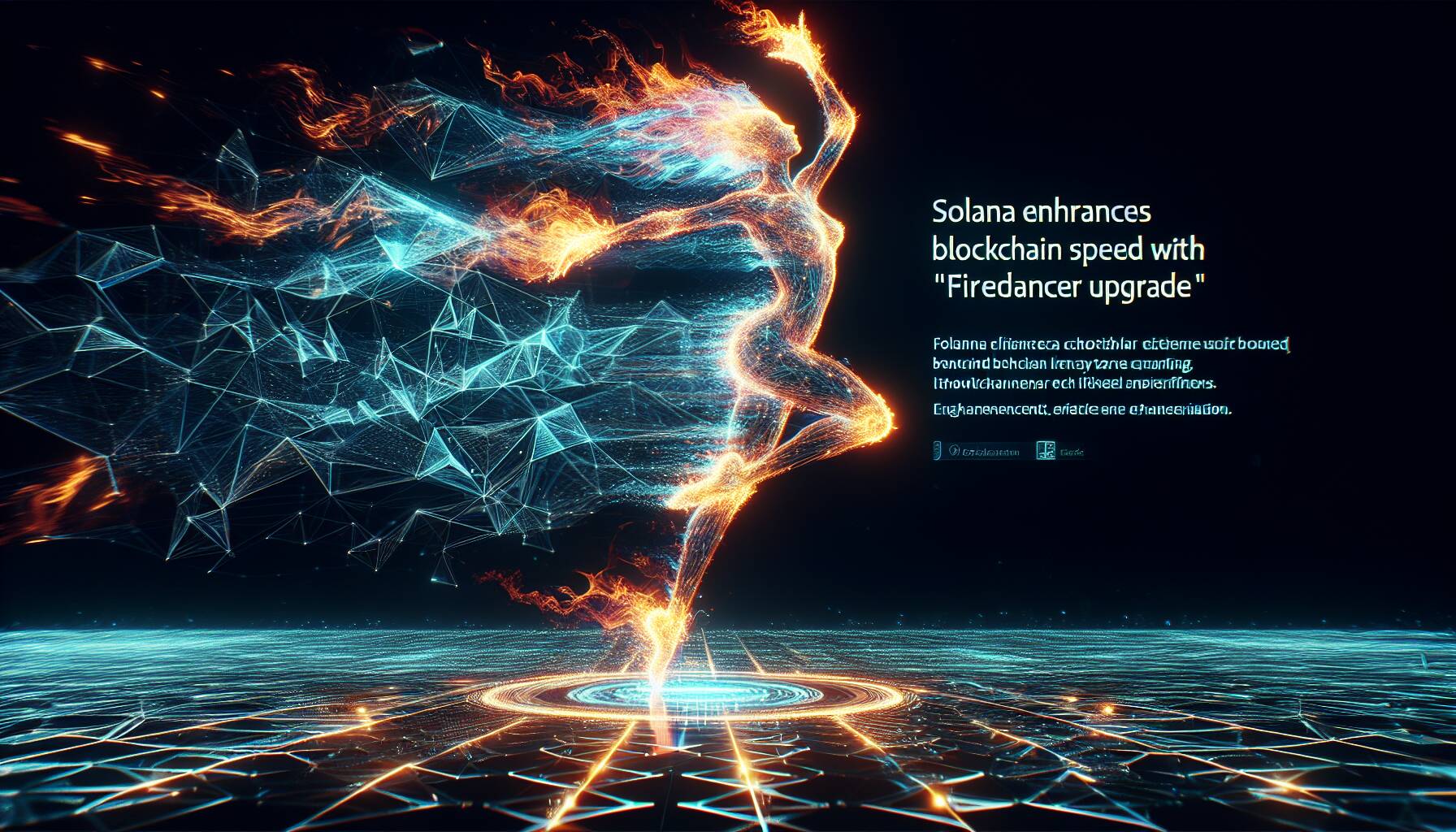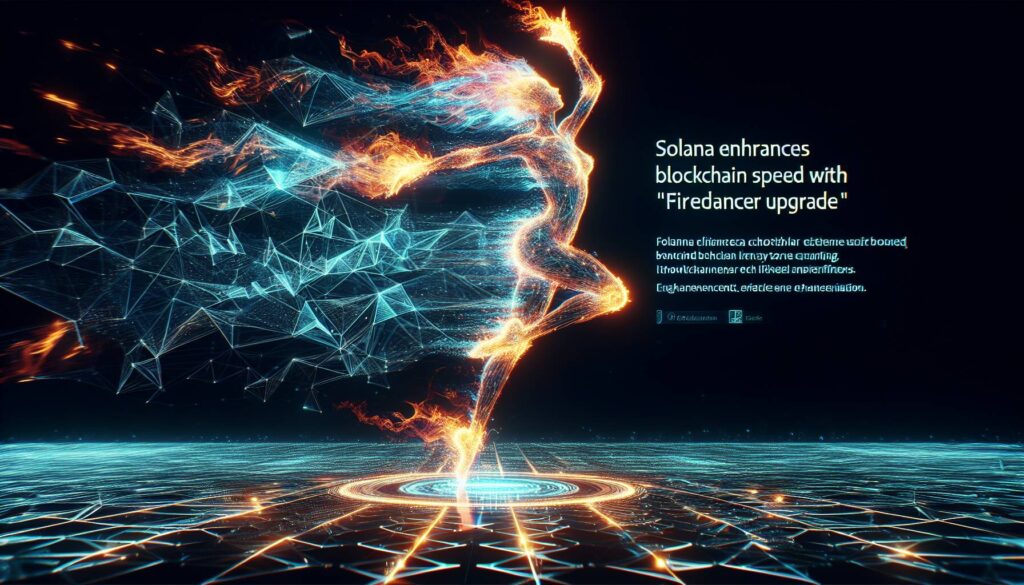In an exciting development for the Solana blockchain, the team is ramping up the testing of their much-anticipated software upgrade, Firedancer. This enhancement aims to significantly boost the network’s processing speed, a much-needed improvement given the challenges Solana faced in 2022 with frequent outages. This week, core developers are rallying Solana’s network validators to adopt an early version called Frankendancer, as they aim for over 60% of the processing power on the low-stakes test network to run this hybrid client.
The Firedancer project, spearheaded by Jump Crypto, the crypto division of trading powerhouse Jump Trading, promises theoretical transaction speeds of up to one million per second. If realized, this would set a remarkable benchmark for blockchain systems, potentially positioning Solana ahead in the race to capture global financial markets’ interest in decentralized technology.
“It’s been notoriously difficult to keep that thing alive and running but we’ve done it,”
said Kollen House, a veteran in the Solana validator community. His insights reflect the challenges validators face in maintaining stability, especially when adopting innovative software like Frankendancer.
This push for adoption represents a notable test as fewer validators had previously embraced Frankendancer due to bugs and instability. Demonstrating commitment, the Solana Foundation has implemented strategies to incentivize smaller validators to keep their software current. This includes a compelling delegation program designed to support those who may struggle to maintain competitiveness in a rapidly evolving ecosystem.
As the deadline looms for validators to switch to the new client, the atmosphere is charged with anticipation and determination. Currently, about 30% of testnet validators are running Frankendancer, but the community recognizes that achieving a supermajority is crucial for the project’s success.
“At present, it seems like they’re getting there,”
remarked Jon, a validator operator who’s been running Frankendancer for several months. His comments echo the broader sentiment within the community as they collectively steer towards a new chapter for the Solana network.

Key Points on Solana’s Firedancer Upgrade
The upcoming Firedancer upgrade for the Solana blockchain aims to significantly enhance its processing capabilities and overall stability. Here are the key points regarding this upgrade:
- University Upgrade: Firedancer is being tested to vastly increase blockchain processing speeds.
- Validator Engagement: Solana’s developers seek a “super majority” of validators to run Frankendancer, indicating collective efforts to assess the software.
- Theoretical Speed: Firedancer has the potential to process one million transactions per second, vastly outpacing current blockchain systems.
- Historical Context: The upgrade has been in development since 2022, a response to previous system falters.
- Challenges with Adoption: Some validators report that Frankendancer has been buggy and prone to crashes, affecting its deployment on the test network.
- Incentives for Validators: The Solana Foundation utilizes a delegation program to help smaller validators stay profitable and encourage them to upgrade their systems.
- Current Adoption Rates: Approximately 30% of validators are currently running Frankendancer; a supermajority is still needed for further testing.
The successful implementation of the Firedancer upgrade could profoundly impact users of the Solana blockchain and the broader crypto market:
- Improved transaction speed may lead to enhanced user experience for applications built on Solana.
- Reliable and faster processing can attract more users and developers, leading to increased participation in the ecosystem.
- Stability in the network can reduce concerns about outages, providing confidence for investors and businesses engaging with Solana.
- A successful Firedancer launch could position Solana as a competitive player in the evolving landscape of blockchain technology, potentially affecting market dynamics.
Firedancer and Solana: A High-Stakes Game of Blockchain Advancements
As Solana gears up for its much-anticipated Firedancer upgrade, the blockchain community is attentive to its implications amidst fierce competition. This critical software update aims to significantly enhance Solana’s processing speed, potentially reaching unprecedented speeds of one million transactions per second. However, the journey toward seamless integration is fraught with both promise and challenges.
In a landscape already dominated by well-established players such as Ethereum and newer entrants like Avalanche, Firedancer presents a poignant opportunity for Solana to solidify its position as a scalable and high-speed competitor. Its advantages lie not just in theoretical performance but also in regional appeal, as Solana seeks to attract global financial markets with unparalleled efficiency. On the flip side, the recent rollout of Frankendancer, the nascent hybrid iteration of Firedancer, has faced criticism for being glitchy and unstable, a concern echoed by some validators. Consequently, the challenge for Solana is to convert theoretical speed into practical, reliable applications, a crucial hurdle on its path of wider adoption.
Moreover, Solana’s reliance on its validators to adopt Frankendancer brings with it potential friction. The Solana Foundation’s push to threaten stake revocations if validators do not comply may alienate smaller validators who might already be struggling for profitability. While such a strategy may drive short-term results, it risks creating dissent and pushing smaller players out of the ecosystem, ultimately compromising decentralization — a vital principle of blockchain technology.
While the rapid advancements brought by Firedancer may resonate well with high-frequency trading firms and institutional investors seeking speed and reliability, the ongoing technical difficulties and community tensions may deter some long-term validators and enthusiasts who favor a more stable, community-driven approach. Ultimately, the success of this software upgrade hinges not only on the technology itself but also on how well Solana can navigate its intricate network of validators while fostering a collaborative environment.

















